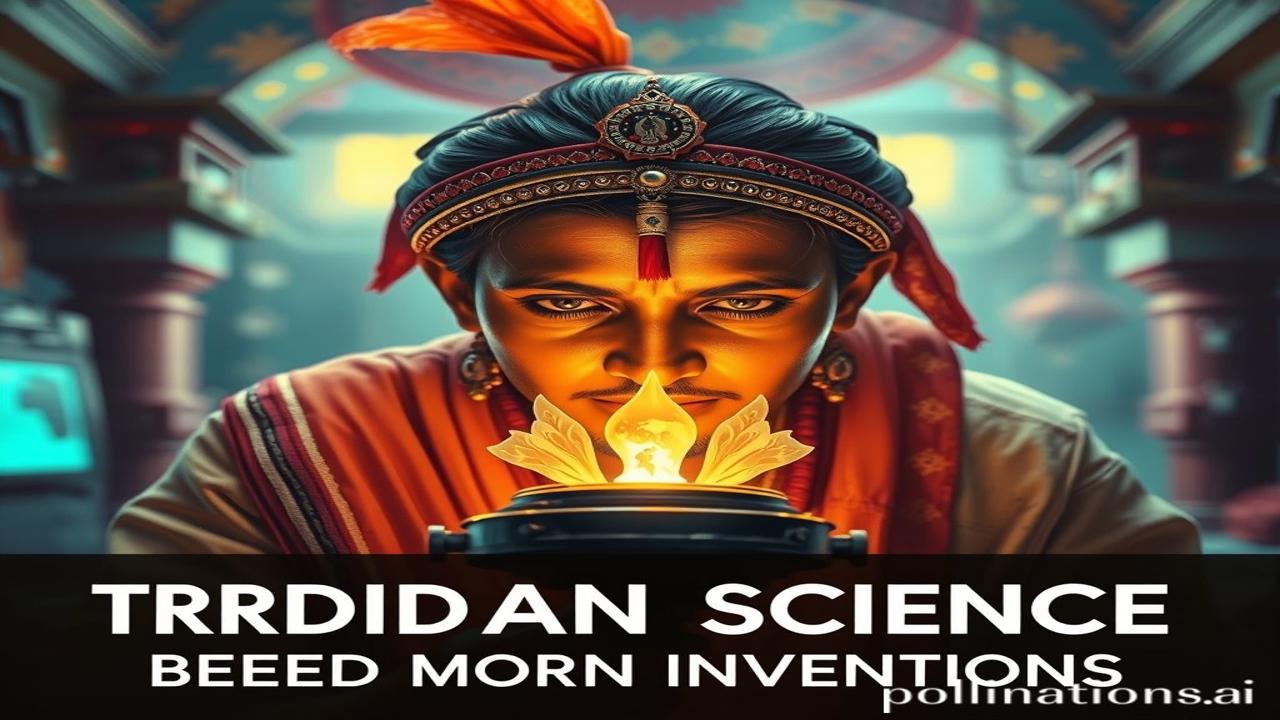Waqt Ki Dhool Mein Chhupi Vigyan: Unveiling India’s Ancient Science Behind Modern Inventions
Kabhi socha hai, jo smartphones hum din bhar chipkaye rehte hain, ya jo airplanes hamein duniya bhar mein le jaate hain, unka seedha connection humare purvajon ki soch aur vigyan se hai? Waqt ki dhool mein kuch kahaniyan chhup jaati hain, lekin jab hum unhe kholte hain, toh pata chalta hai ki Bharat ki mitti mein toh centuries se innovation pal raha hai. Let’s explore how!
Bharat Ka Vigyan: Ek Historical Backdrop
What exactly is this “traditional Indian science” that we’re talking about? Well, it’s not just one thing. It’s a vast, interconnected system of knowledge developed over thousands of years in the Indian subcontinent. Think of it as a combination of Ayurveda, Vastu Shastra, Yoga, Mathematics, Astronomy, and even Metallurgy.
When and where did it all begin? The roots go back to the Indus Valley Civilization (around 3300-1700 BCE). But the real blossoming happened during the Vedic period (around 1500-500 BCE) and continued through the Gupta Empire (320-550 CE) – considered the golden age of India.
Why is it so important? Because it shows us that India wasn’t just about spirituality and philosophy; it was a hub of scientific thought and innovation. Many concepts and inventions we take for granted today have their roots in this ancient knowledge. Consider the concept of zero, which revolutionized mathematics and paved the way for computer science!
Zameeni Sach: Log Aur Jeevan
Imagine a day in the life of Aryabhata, the 5th-century mathematician and astronomer. He wakes up before dawn, performs his puja, and then heads to his shala (study). He spends his days calculating planetary positions, developing trigonometric functions, and even proposing that the Earth rotates on its axis – centuries before Copernicus!
Or picture a vaidya (Ayurvedic doctor) in a bustling market town. He meticulously collects herbs, diagnoses illnesses based on pulse reading (nadi pariksha), and prepares remedies using ancient recipes passed down through generations. His knowledge of plants and their medicinal properties is vast and intricate.
“Aaj, Ma Rukmini, yeh haridra (turmeric) dhoodh un bachon ko dijiye jinke sharir mein takleef hai,” the vaidya instructs. “Isse unki immunity badhegi.”
These weren’t just abstract ideas; they were practical applications that directly impacted people’s lives. From irrigation systems designed using Vastu Shastra principles to complex surgical procedures detailed in the Sushruta Samhita, traditional Indian science was deeply woven into the fabric of society.
Dharohar Aur Pehchan: Cultural Significance Today
How do we see echoes of this ancient science today? Everywhere!
- Ayurveda: Still a popular and respected form of alternative medicine in India and globally.
- Yoga: Practiced by millions worldwide, it promotes physical and mental well-being.
- Vastu Shastra: Used in architecture and home design to create harmonious living spaces.
- Mathematics: The decimal system and the concept of zero, contributions from India, form the backbone of modern calculations.
Even our festivals are steeped in scientific understanding. For example, Holi, the festival of colors, coincides with the change of season and is believed to ward off seasonal illnesses.
It’s all part of our Bharatiyata – a reminder of our intellectual heritage and a source of pride.
Mazedar Tathya Ya Bhram-Bhanjak: Fun Fact or Myth-Buster
Myth: Ancient Indian science was all about mysticism and spirituality, not practical application.
Reality: While spirituality was certainly a part of the cultural landscape, ancient Indian scientists were deeply concerned with practical solutions to real-world problems. They developed advanced techniques in metallurgy, agriculture, and medicine, demonstrating a strong focus on empirical observation and experimentation. For example, Indian steel was highly prized for its strength and durability, showcasing advanced metallurgical skills.
Drishya Aur Bhavnayein: Visual & Sensory Layer
Imagine the air filled with the fragrance of incense sticks and sandalwood as you enter an ancient temple. The rough texture of the stone walls against your skin, the rhythmic chanting of mantras resonating in your ears, and the flickering light of the oil lamps casting dancing shadows – these are the sensory experiences that connected people to their heritage and fostered a deep respect for knowledge. The aroma of freshly ground turmeric and the sound of temple bells created an ambiance that was both sacred and scientific.
Antim Vichar Ya Uddharan: Closing Insight or Quote
Just like the roots of a Banyan tree run deep and wide, so too does the legacy of traditional Indian science extend its branches into our modern world. It’s a reminder that innovation is not just a recent phenomenon; it’s a continuous thread that connects us to our past and inspires us to shape a better future.
As they say in Sanskrit: “ज्ञानं परमं ध्येयम्” (Jnanam Paramam Dhyeyam) – Knowledge is the ultimate goal. And that pursuit of knowledge, started centuries ago, continues to light our way forward.
